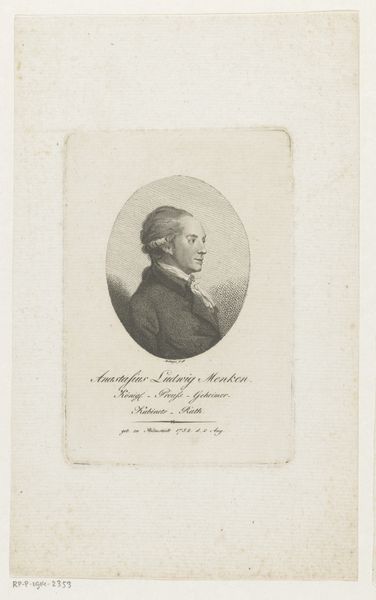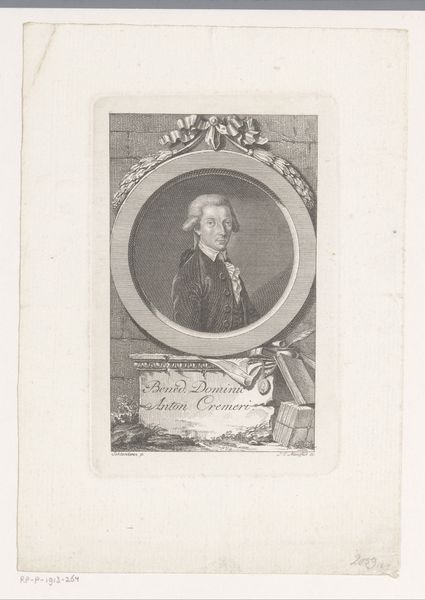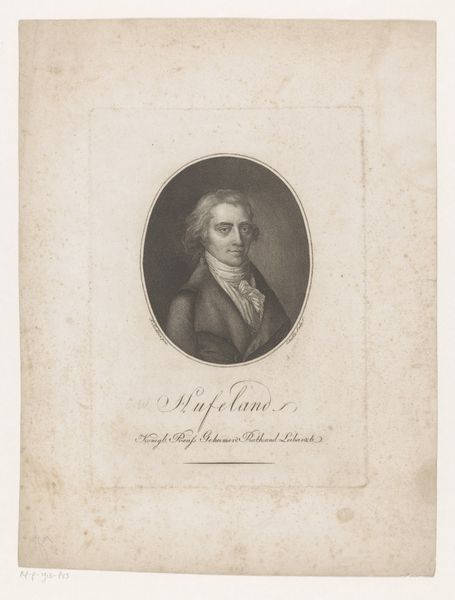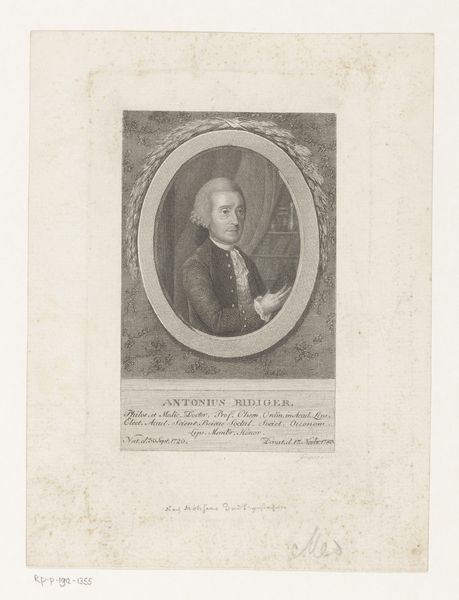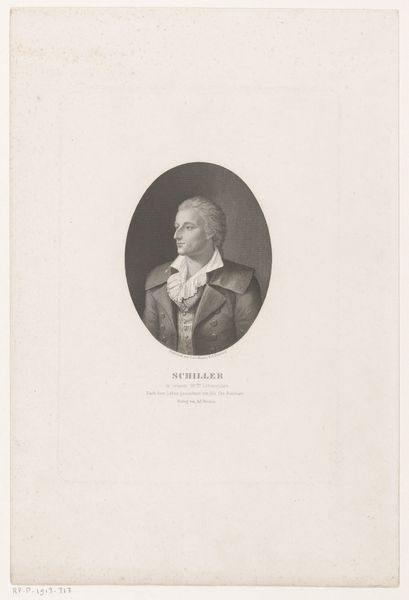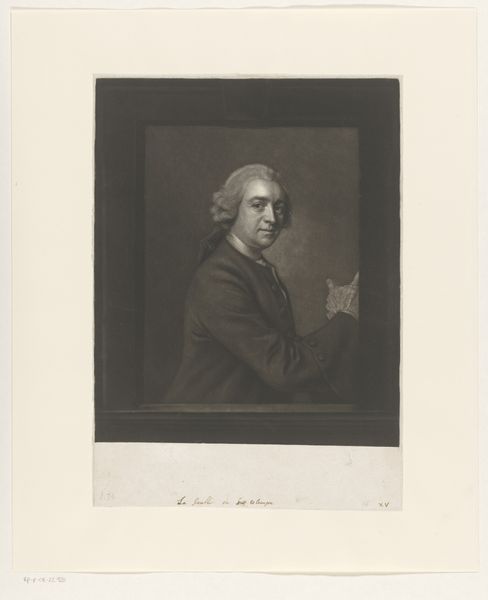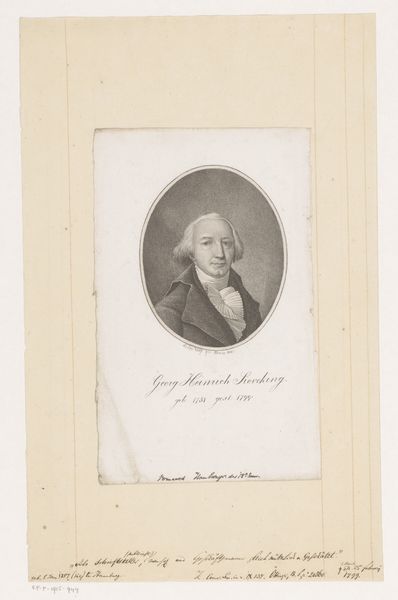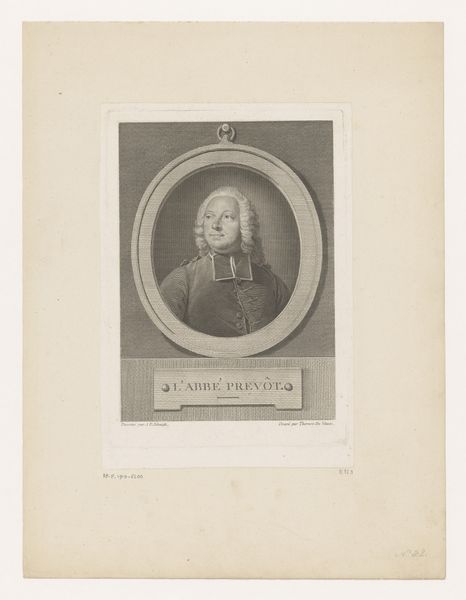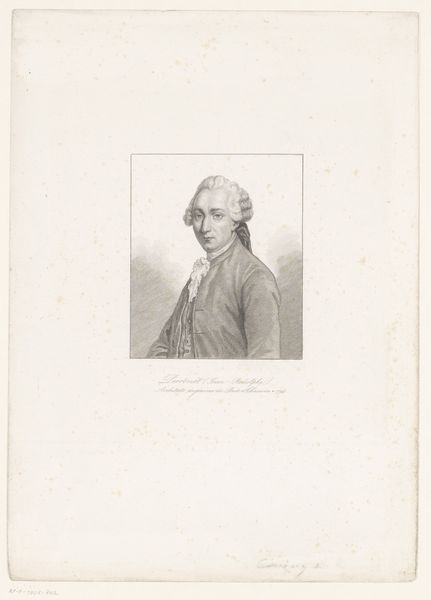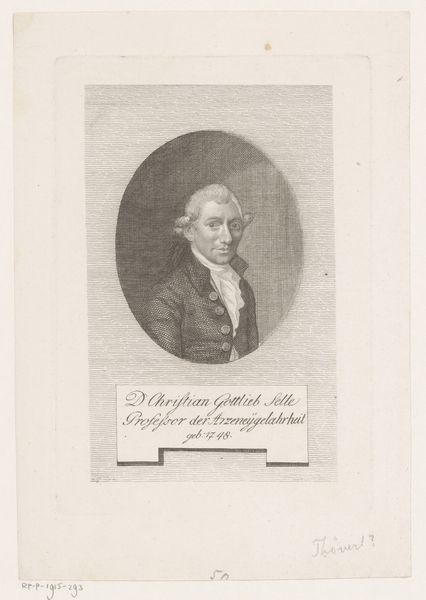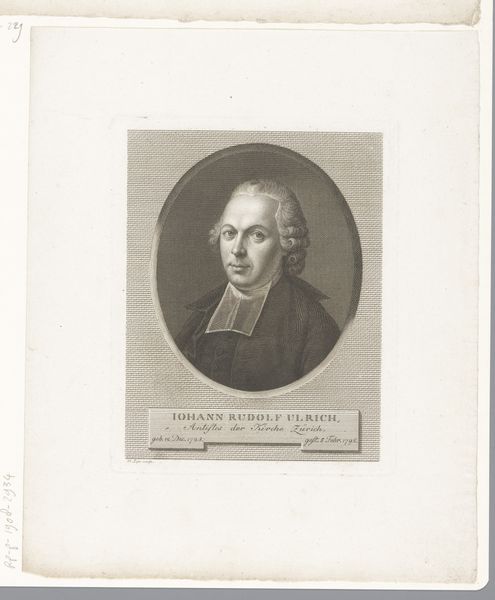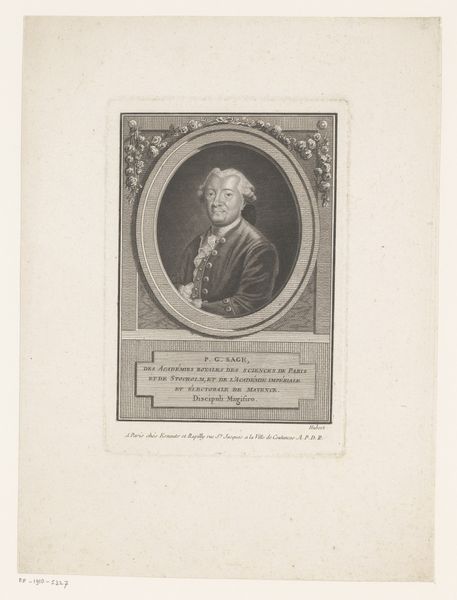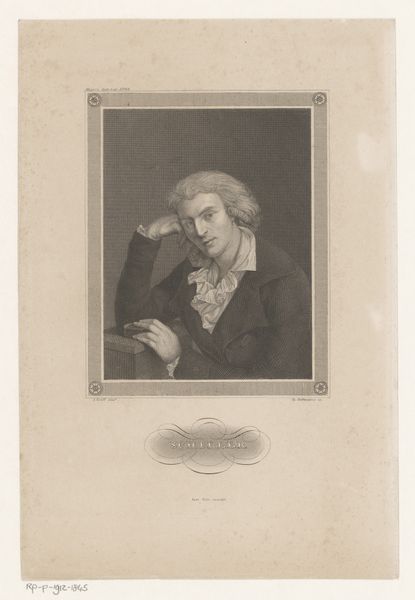
print, etching, engraving
#
portrait
#
baroque
# print
#
etching
#
engraving
Dimensions: height 324 mm, width 225 mm
Copyright: Rijks Museum: Open Domain
Curator: What a striking image! We’re looking at "Portret van David Garrick," a print made by James McArdell, dating back to circa 1751-1753. The artwork is currently held in the Rijksmuseum collection. Editor: It immediately strikes me as a theatrical scene. He looks as though he’s caught mid-gesture, perhaps delivering a line in a play, hand extended with purpose, set within a dark framed backdrop that amplifies his pale skin. It is, for me, a very deliberate tableau. Curator: Yes, Garrick was a celebrated actor, and McArdell masterfully captures that performative essence, embedding symbolic cues through gesture and mise-en-scène. His upturned gaze conveys a moment of inspiration, or perhaps a challenge to the viewer – there’s a real drama in that single, elegant hand. Editor: And how does the technique inform this? It is quite intriguing that an etching/engraving like this, as a mode of reproduction, aided the dissemination of celebrity culture at the time. I’d guess McArdell leveraged the accessibility of prints to shape Garrick’s public image. How powerful a force! Curator: Absolutely. And consider the symbolism in the black and white—the stark contrasts create a heightened sense of drama, much like the play of light and shadow on a stage. We see the iconography of theatrical presentation at play in how he's depicted: note how he's positioned within the faux frame. Editor: You’re right, that's no ordinary portrait, is it? The 'frame within a frame’ construct subtly reminds us that we're viewing a performance, not reality. We’re seeing the crafted image of an actor who himself creates images. Curator: This portrait goes far beyond being a simple depiction of a man. It's an investigation of performance, presentation, and perception—an interrogation of self, played out on the stage of public opinion. It shows how the Baroque embraced the spectacle and understood the potent nature of image-making. Editor: Well, looking closely and considering the man and the methods does reveal layers beyond the surface, offering insight into the complex interplay between art, fame, and identity in the 18th century. Curator: I agree, and by delving into these artistic decisions we can explore the values and priorities of that society and how such ideas circulate still today.
Comments
No comments
Be the first to comment and join the conversation on the ultimate creative platform.
